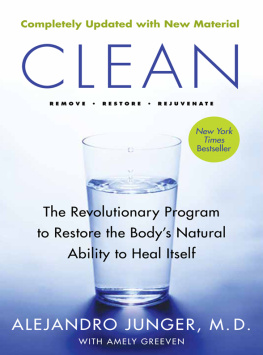Asias Clean Revolution
Here you can read online Asias Clean Revolution full text of the book (entire story) in english for free. Download pdf and epub, get meaning, cover and reviews about this ebook. publisher: Taylor & Francis Group, genre: Politics. Description of the work, (preface) as well as reviews are available. Best literature library LitArk.com created for fans of good reading and offers a wide selection of genres:
Romance novel
Science fiction
Adventure
Detective
Science
History
Home and family
Prose
Art
Politics
Computer
Non-fiction
Religion
Business
Children
Humor
Choose a favorite category and find really read worthwhile books. Enjoy immersion in the world of imagination, feel the emotions of the characters or learn something new for yourself, make an fascinating discovery.
Asias Clean Revolution: summary, description and annotation
We offer to read an annotation, description, summary or preface (depends on what the author of the book "Asias Clean Revolution" wrote himself). If you haven't found the necessary information about the book — write in the comments, we will try to find it.
Unknown: author's other books
Who wrote Asias Clean Revolution? Find out the surname, the name of the author of the book and a list of all author's works by series.
Asias Clean Revolution — read online for free the complete book (whole text) full work
Below is the text of the book, divided by pages. System saving the place of the last page read, allows you to conveniently read the book "Asias Clean Revolution" online for free, without having to search again every time where you left off. Put a bookmark, and you can go to the page where you finished reading at any time.
Font size:
Interval:
Bookmark:
First published 2000 by Greenleaf Publishing Limited
Published 2017 by Routledge
2 Park Square, Milton Park, Abingdon, Oxon OX14 4RN
711 Third Avenue, New York, NY 10017, USA
Routledge is an imprint of the Taylor & Francis Group, an informa business
Copyright 2000 Taylor & Francis
Typeset by Greenleaf Publishing.
All rights reserved. No part of this book may be reprinted or reproduced or utilised in any form or by any electronic, mechanical, or other means, now known or hereafter invented, including photocopying and recording, or in any information storage or retrieval system, without permission in writing from the publishers.
Notice:
Product or corporate names may be trademarks or registered trademarks, and are used only for identification and explanation without intent to infringe.
British Library Cataloguing in Publication Data:
Asias clean revolution: industry, growth and the
environment
1. Industries - Asia - Environmental aspects 2. Economic
development - Environmental aspects - Asia
I. Angel. David P. II. Rock. Michael T.
333.7095
ISBN 978-1-874719-33-5 (hbk)

Owen Cylke and Somporn Kamolsiripichaiporn
The worlds economic future will be determined in significant part by what happens in rapidly industrialising countries-particularly in Asia-where capital, consumption, manufacturing and technology will again become a growth engine for the global economy. Significantly, the worlds environmental future is equally dependent on what happens in Asia where economic, population and urban growth and environmental stress are converging most forcefully.
Recognising that resolution of the tension between growth and the environment early in the third millennium may be the test by which posterity will most stringently grade our generation, the US-Asia Environmental Partnership organised a set of international conversations in 1998 to develop a better understanding of the Asian context and the rapidly changing global circumstance. Based on those conversations, and in close collaboration with the Greening ofIndustry Network, the Partnership felt confident in 1999 to step back from its project and programme work to look at frameworks for policy intervention, commissioning a series of papers both by Asian and by American authors. This book is the product.
In considering the issues and rather remarkable ideas put forward in the various chapters of this book, it may be useful to step back from the Asia Crisis to recall that from 1965-90 the 23 countries of East Asia grew faster than all other regions of the world. These same countries were also unusually successful at sharing the fruits of growth. As a result of rapid, shared growth, living standards improved dramatically over a 30-year period. Indeed, there is good reason for the period to have been characterised as an economic miracle. Asia will probably return to this kind of growth regime, maybe not to 8%-10% growth, but more likely 7%-8% than 4%-5%.
All the economies in Asia today are urban-organised and industrial-led. Indeed, the major development forces at work in the region will only accentuate these trends over the next 20 years. Think about it. Some 80% of the industrial infrastructure in just 20 years will consist of plant that is not on the ground today. Where 50% of global manufacturing already takes place outside the OECD (Organisation for Economic Co-operation and Development) economies, perhaps as much as 75% will take place in the industrialising economies of Asia and Latin America by 2020.
Indeed, Asia may account for as much as 60% of world income by 2020. Perhaps 400 million will be added to the regions population over the next 20 years, and maybe 200 million will move into the consuming dass and into cities. It is the momentum of these forces, not just the numbers, that suggests that the worlds environmental future will be determined in significant part by what happens in Asia and in other rapidly industrialising and urbanising regions. The subject of this book, then, is truly important.
Context and perspective is particularly important, and here the book is especially useful. The DECO economies are not developing economies, and North America is not Asia. The drivers of a deaner environment may emerge from different sources than they did in the DECO, from concerns about scarcity in addition to public health, suggesting a policy priority for efficiency over pollution. The chapters in this book are filled with this kind of insight, arising as they do from intercontinental co-authorship. Similarly, this book calls our attention to the reality that today is not tomorrow, and that now is not then. Simple, perhaps, but recall that Rachel Carson wrote Silent Spring in 1962 and that the Brundtland Report was issued in 1987 (WCED 1987). The Greening of Industry Network was launched in Asia in 1998, and the authors of the chapters in this book are debuting their work just today-at the dawn of a new millennium.
Against this backdrop, Asias Clean Revolution makes a most profound point-that reconciling economic and environmental goals will be possible only through a transformation in technology and industrial organisation-a shift unprecedented in scope and pace, to new technologies and systems that will dramatically reduce environmental impact per unit of prosperity. In other words, nothing short of a dean revolution will do. The book also succeeds in laying out the contours of the challenge and the full range of policy approaches necessary to reconcile economic and environmental goals. Quite possibly, political leaders in Asia will face no greater challenge in the decades ahead-a challenge that will require continuing effort at the highest levels of governance, and induding international co-operation on a scale seldom seen. The chapters in this book suggest a template for the required effort.
The opportunity for transformation, of course, does not present itself everywhere with equal promise. The DECO economies operate a largely ageing industrial infrastructure that depends on control, retrofit and remediation strategies to deal with pollution. Asia, on the other hand, appears to have most of the ingredients for a dean revolution: increasing public awareness and concern for the environment, improving environmental regulation and enforcement, rapid industrial growth (from a limited base), and increasing pressure for a deaner environment from the community on the one hand and from the international marketplace on the other.
The book also identifies the new forces that will drive development and sustainability in the 21st century. Globalisation is obviously one of them. It is linking economies and cultures and empowering individuals and groups as never before. It is opening immense new opportunities, and at the same time generating a potent backlash. And this combination of forces is compelling more and more governments and companies to recognise that sustainable development, industrial transformation, a deaner environment, increased corporate responsibility, greater citizen participation and concern for those left out of the growth phenomenon must move from a choice to an imperative. Certainly, there is no one code, no one set of guidelines, no one size that fits all; but this book reflects the growing recognition that there are principles to shape and work by, best practices to consider and adopt and new partners with whom to co-operate and innovate.
Asias Clean Revolution presents a template for the desired transformation. The core ideas are sound, illustratively:
- Understanding the environmental challenge in Asia to include energy, water, materials and waste in addition to pollution
Font size:
Interval:
Bookmark:
Similar books «Asias Clean Revolution»
Look at similar books to Asias Clean Revolution. We have selected literature similar in name and meaning in the hope of providing readers with more options to find new, interesting, not yet read works.
Discussion, reviews of the book Asias Clean Revolution and just readers' own opinions. Leave your comments, write what you think about the work, its meaning or the main characters. Specify what exactly you liked and what you didn't like, and why you think so.








